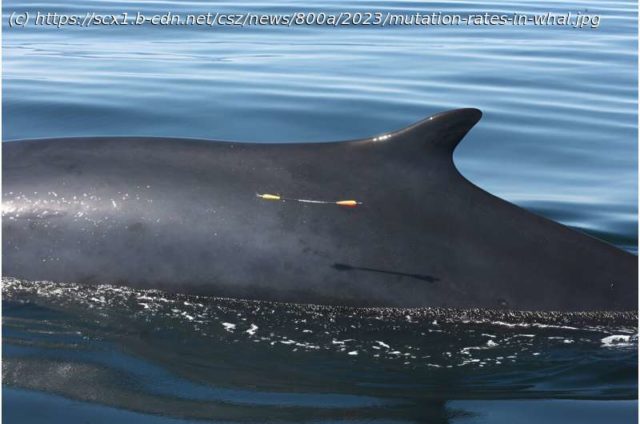An international team of marine scientists, led by the University of Groningen in the Netherlands and the Center for Coastal Studies in the U.S., has studied the DNA of family groups from four different whale species to estimate their mutation rates. The results revealed much higher mutation rates than previously thought, which are similar to those of smaller mammals such as humans, apes, and dolphins.
An international team of marine scientists, led by the University of Groningen in the Netherlands and the Center for Coastal Studies in the U.S., has studied the DNA of family groups from four different whale species to estimate their mutation rates. The results revealed much higher mutation rates than previously thought, which are similar to those of smaller mammals such as humans, apes, and dolphins.
Using the newly determined rates, the group found that the number of humpback whales in the North Atlantic before whaling was 86% lower than earlier studies suggested. The study is the first proof that this method can be used to estimate mutation rates in wild populations. It is published in the journal Science.
Mutation rate is a key parameter in genetics and genomics, where it is used to determine rates of evolution and adaptation. It is also used to derive the number of whales in the oceans before they were decimated by large-scale commercial whaling. However, estimating the rate at which new mutations appear in whales, or in any wild species, is difficult.
For a long time, the phylogenetic method was used to measure mutation rates. This method uses fossil data from different species to estimate when they diverged. Subsequently, DNA from those species is compared to infer how many mutations must have occurred since the divergence.
«However, the fossil record is not that exact. And some mutations may have disappeared over time,» says Per Palsbøll, Professor of Marine Evolution and Conservation at the University of Groningen. He has studied whales since the late 1980s and is a corresponding author of the Science paper.
A more recent approach is the pedigree method, which uses the genomes of a pair of parents and their offspring to identify new mutations in the offspring. This more direct method relies on very few assumptions and is ideal for comparing mutation rates among different species, such as whales and humans.
Especially in wild species, the challenge is to obtain tissue samples from both parents and their offspring. First author Marcos Suárez-Menéndez explains, «The method has only been used on a handful of animals that are living in the wild, such as a single wolf pair and their cubs.






